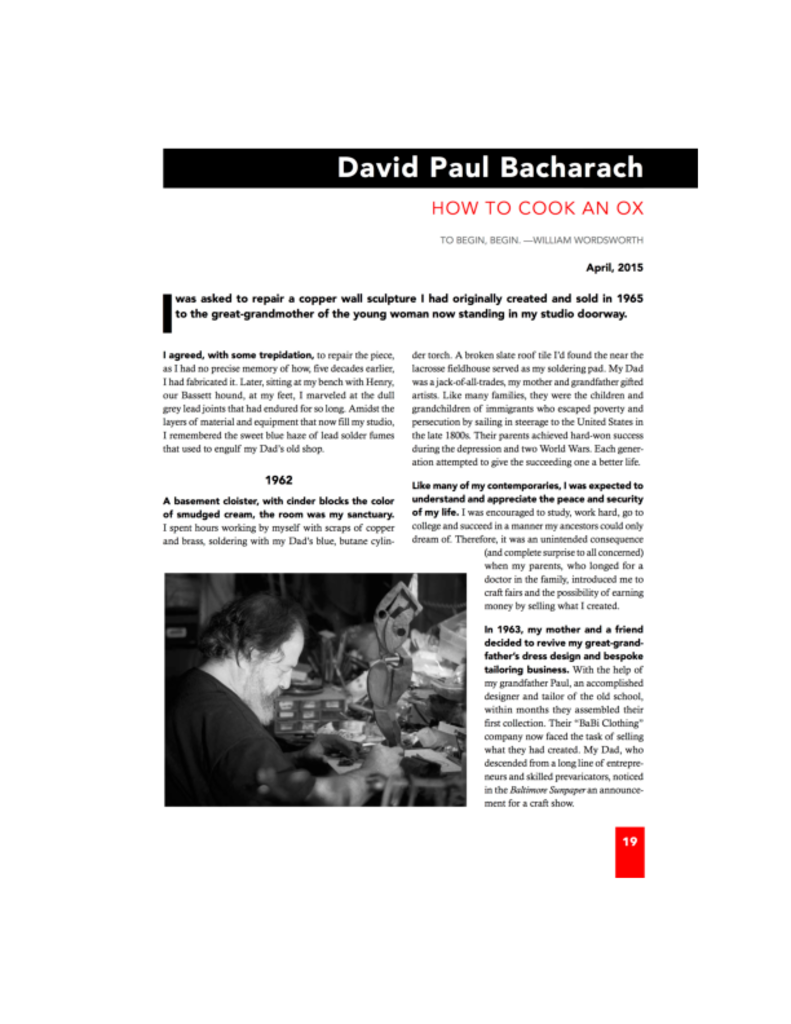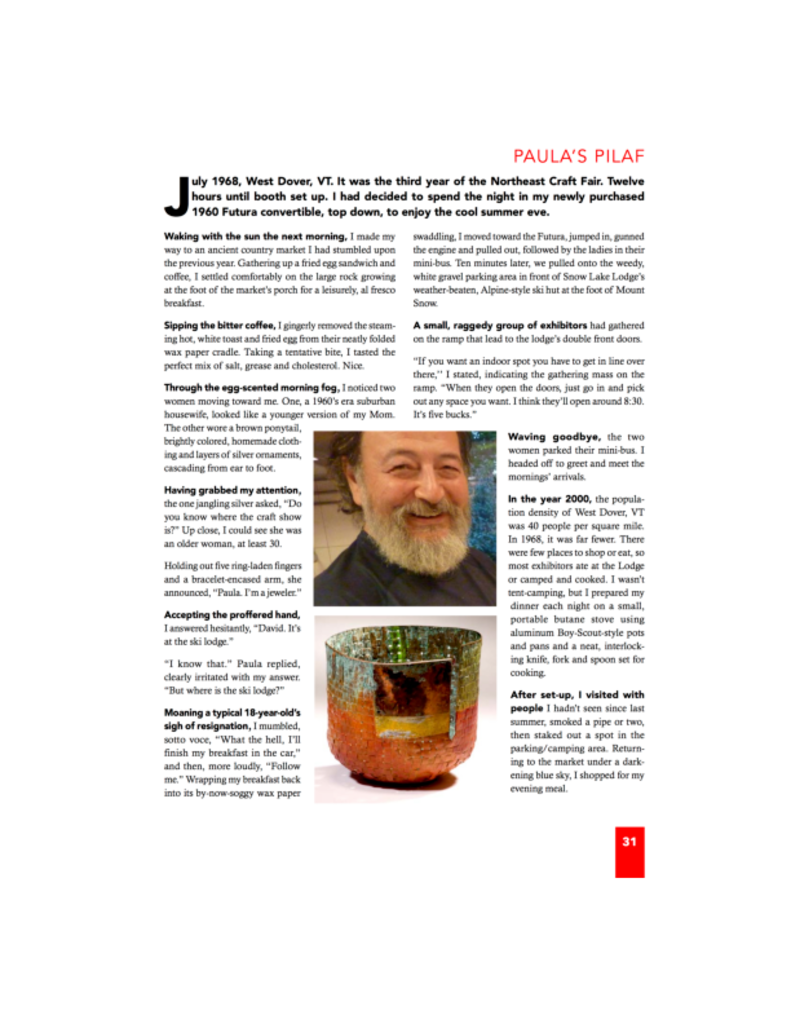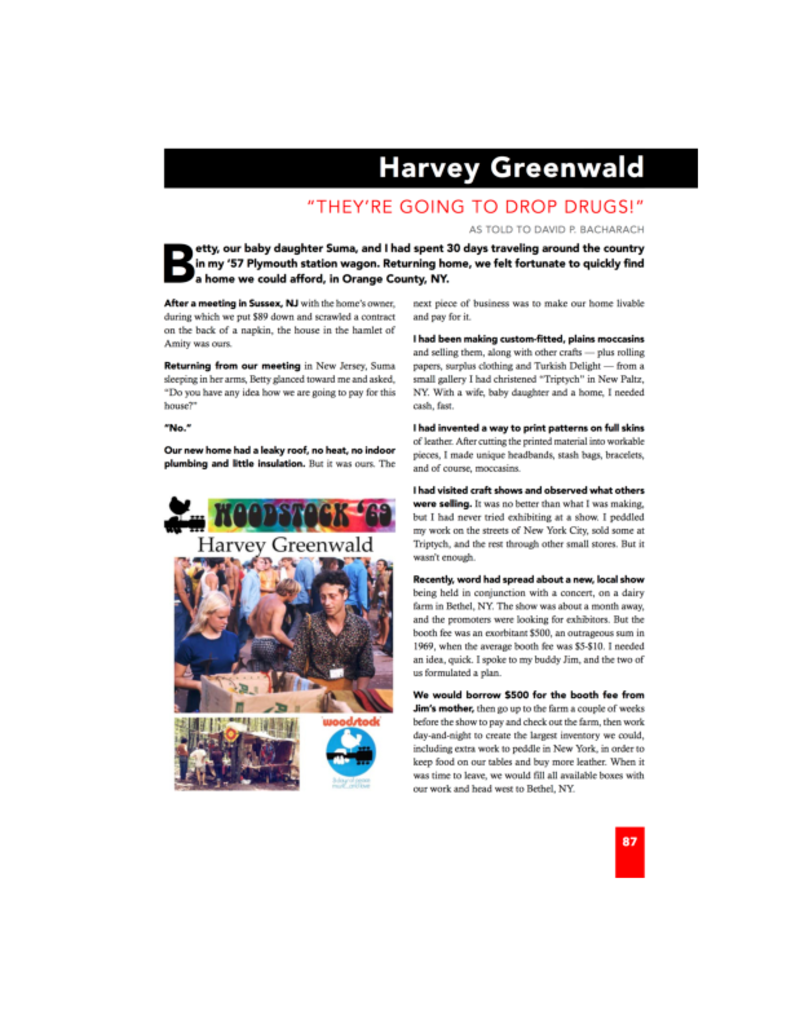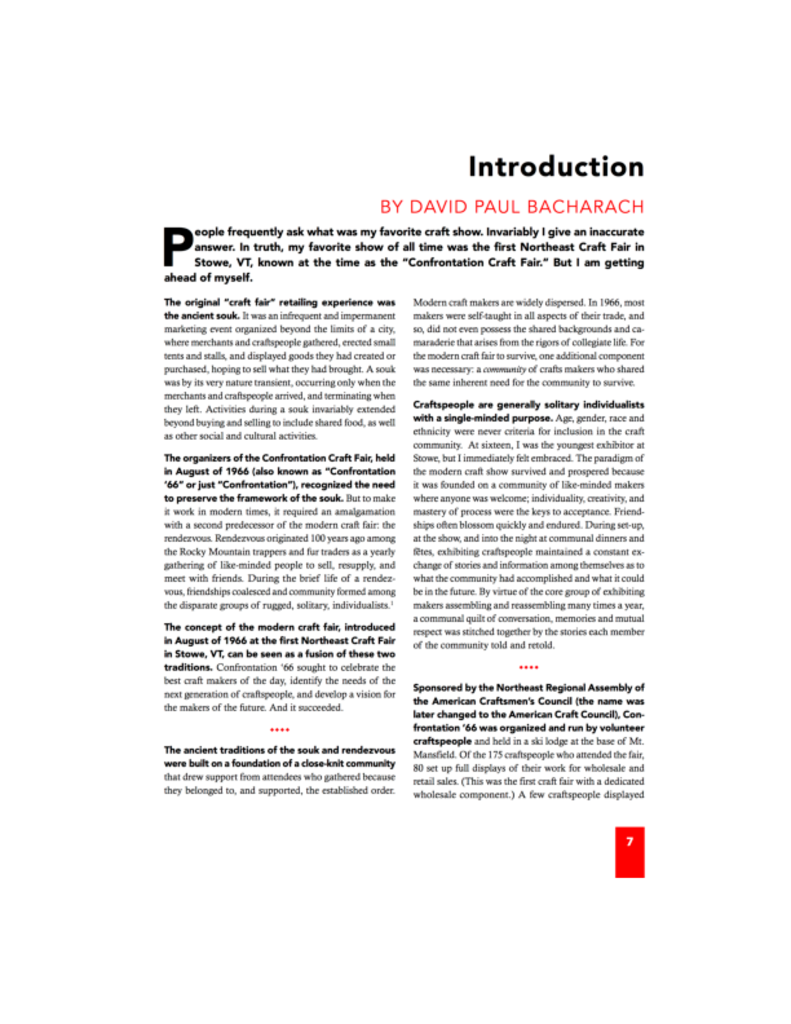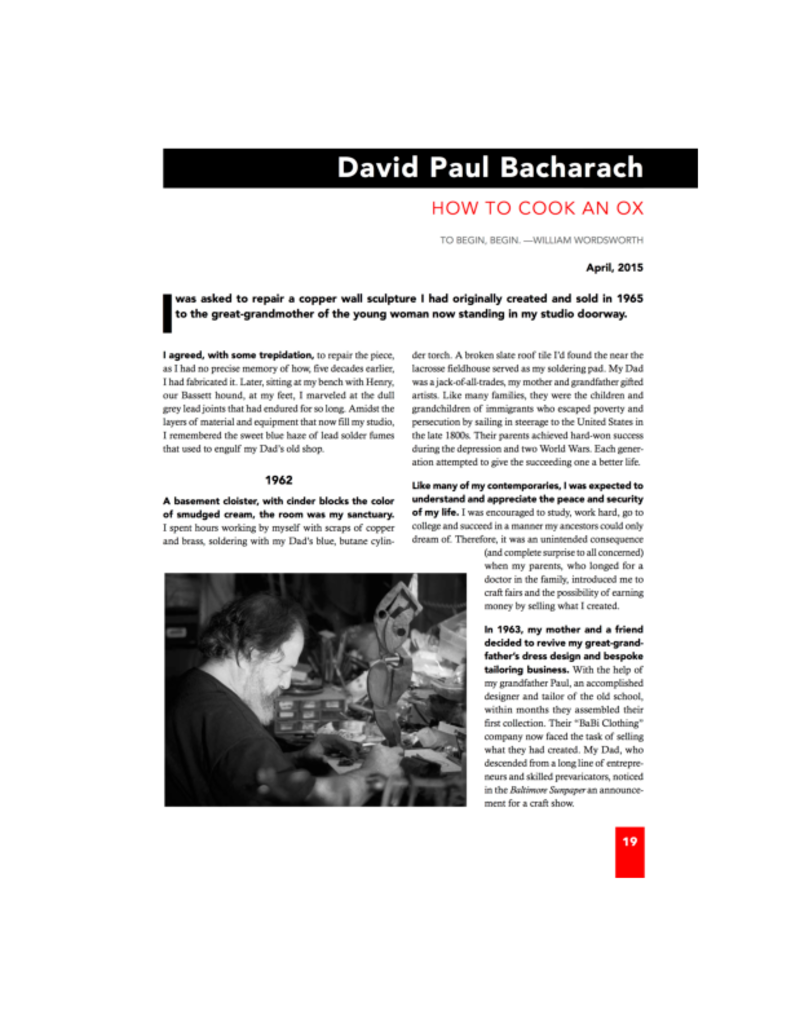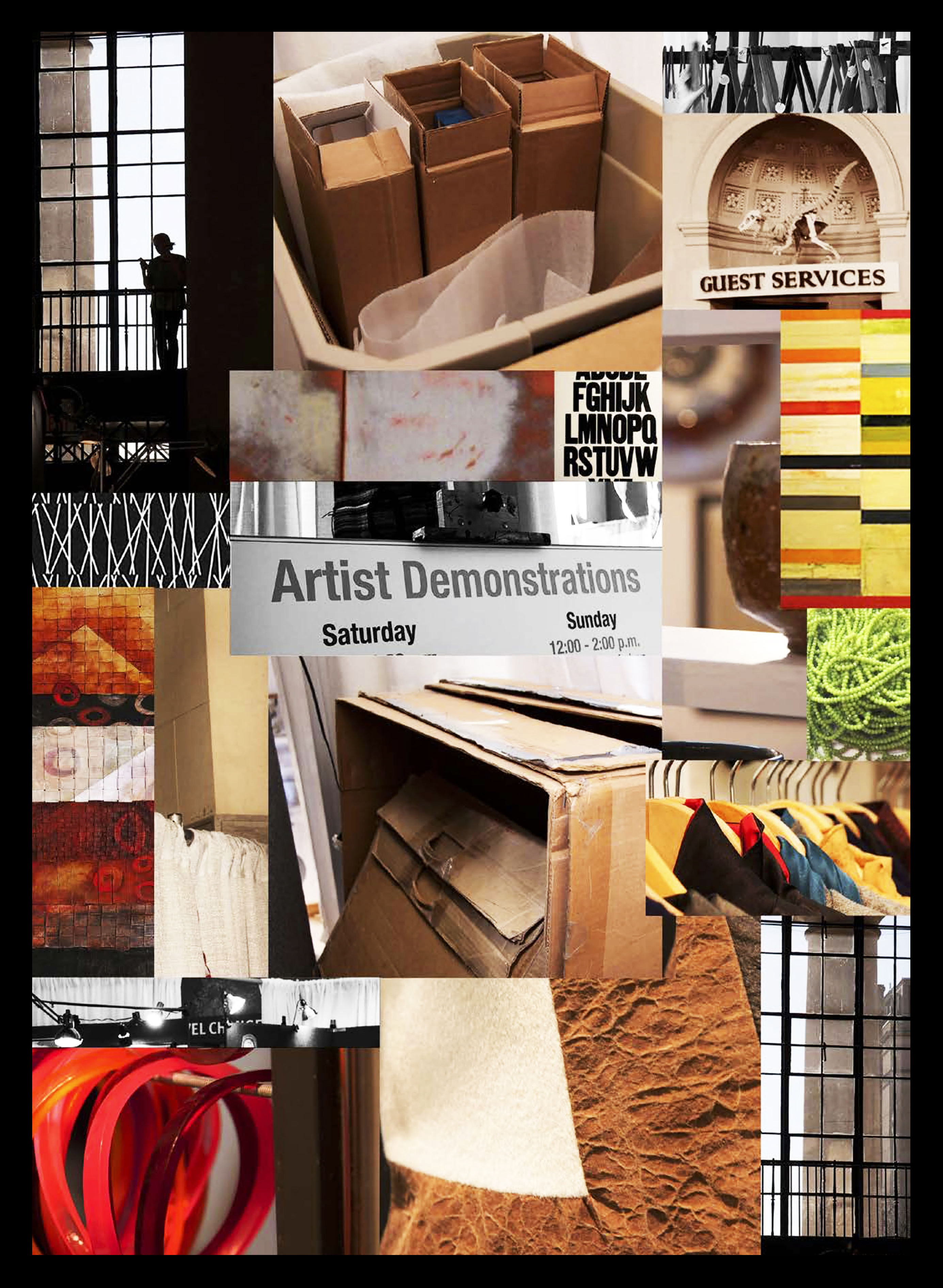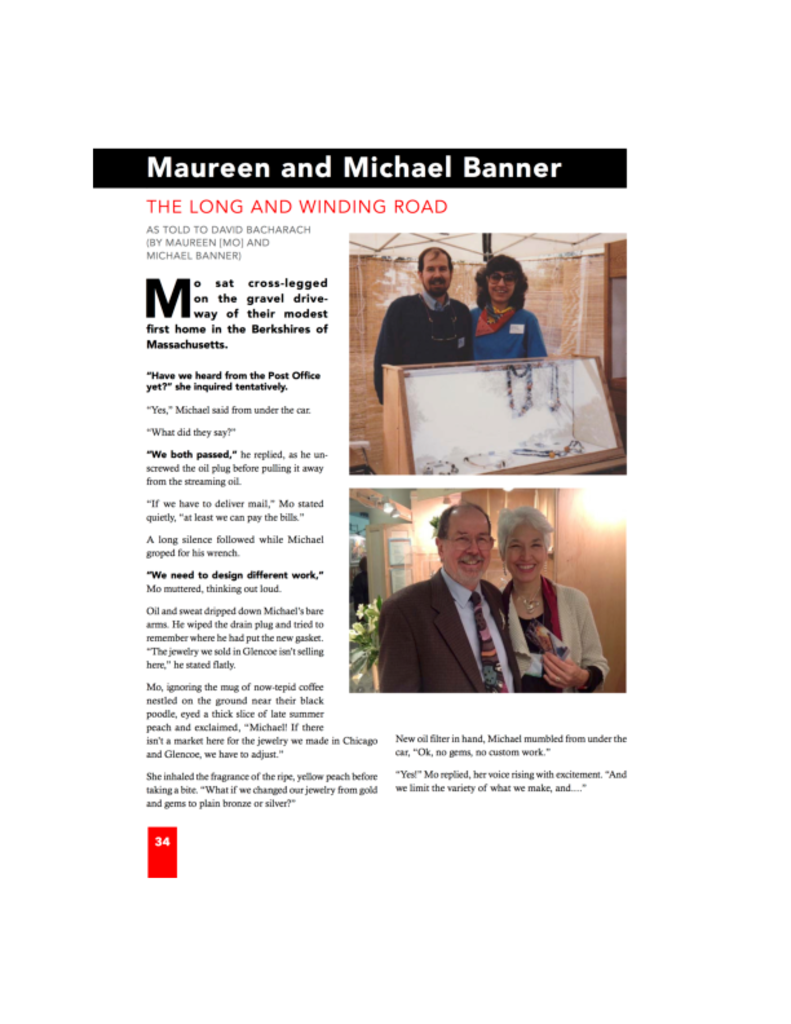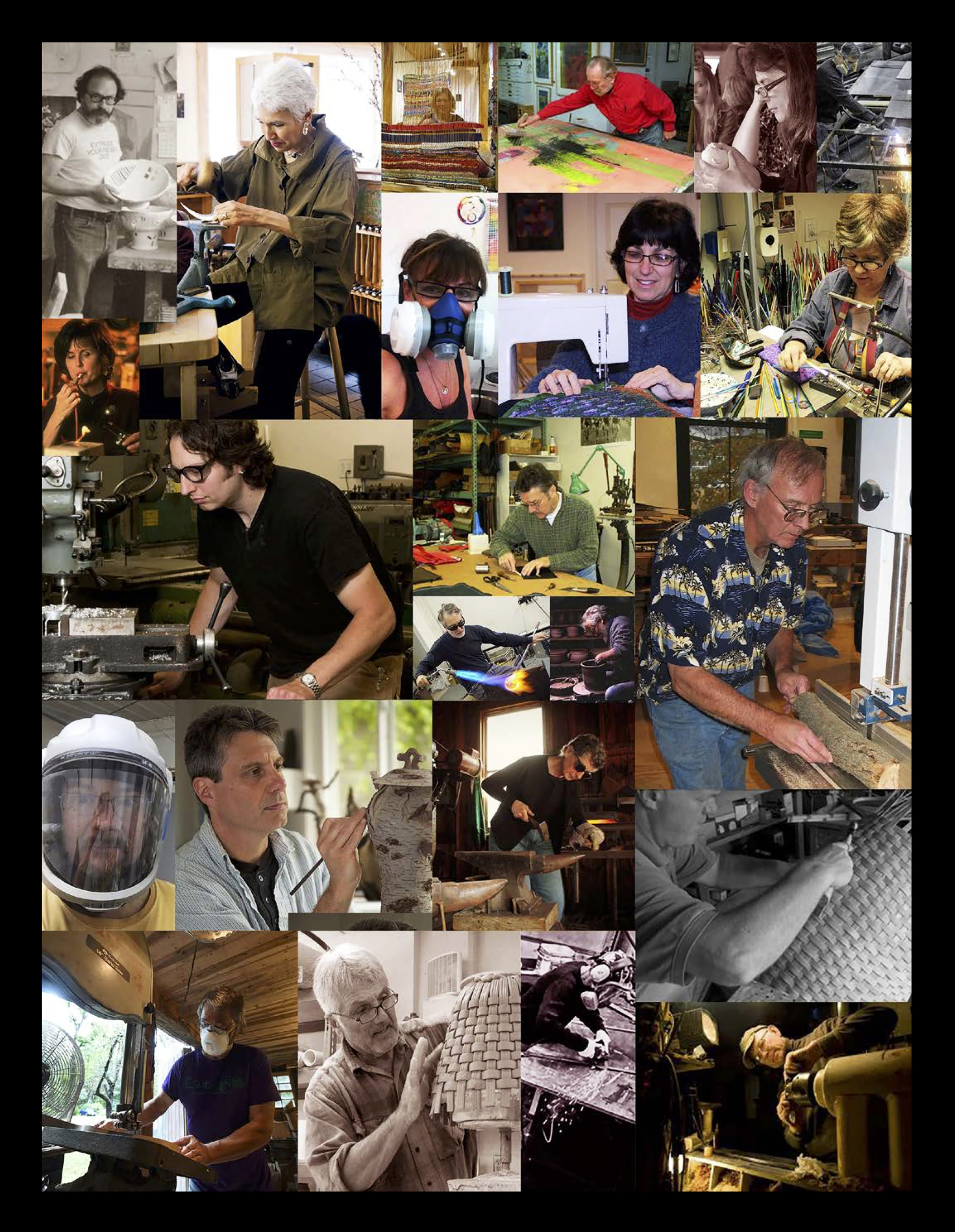In 2014 a small group of craft artists gathered in Chicago to discuss the future of the American studio craft movement. During those conversations several attendees lamented the fact that no history of the movement or the community they felt so much a part of had been written .
Additionally it was noted that any first hand history of the movements beginnings had to be gathered soon because many of the original craftspeople were World war II vets and/or Black Mountain School graduates and as such were no longer working or in some cases had died.
These artists, defined by creativity, ingenuity and self reliance were in many cases self taught in the field of craft they chose to explor. Many earned their livings not by teaching or writing but by creating work in their studios and transporting that work to events around the country to sell.
Additionally, it was noted that the Craftsman's Emergency Relief Fund (CERF+), a non-profit founded and funded by these same studio craft artists that was established to provide direct financial assistance and emergency relief as well as educational oppurtunities to craftspeople was in dire need of funds as a result of the recession of 2009.
Valerie Hector a bead artist, and myself decided to develope a project that would serve both to chronicle the studio craft movement from the late 50's until today and provide CERF with it's much needed funds.
The result was a book, "Craftspeople in Their Own Words" that brought together stories written or related by the craftspeople themselves describing their lives in the studio, on the road, or at various craft events from the 1960s to the present. The book was to offer an intimate look at the experiences and philosophies of these highly creative professional artists working in all craft media.
Michael Monroe, curator of the Renwick Gallery of American Craft and Director of the American Crafts Council immediately agreed to contributed the Preface.
All profits from the sale of the book were to benefit the Craft Emergency Relief Fund (CERF) and we were started.
Seemed simple enough. I had never written a book but was competent with computer design programs. Valerie was a good writer and editor and craftspeople in general are always ready with a stpory or two.
In 2014 a small group of craft artists gathered in Chicago to discuss the future of the American studio craft movement. During those conversations several attendees lamented the fact that no history of the movement or the community they felt so much a part of had been written .
Additionally it was noted that any first hand history of the movements beginnings had to be gathered soon because many of the original craftspeople were World war II vets and/or Black Mountain School graduates and as such were no longer working or in some cases had died.
These artists, defined by creativity, ingenuity and self reliance were in many cases self taught in the field of craft they chose to explor. Many earned their livings not by teaching or writing but by creating work in their studios and transporting that work to events around the country to sell.
Additionally, it was noted that the Craftsman's Emergency Relief Fund (CERF+), a non-profit founded and funded by these same studio craft artists that was established to provide direct financial assistance and emergency relief as well as educational oppurtunities to craftspeople was in dire need of funds as a result of the recession of 2009.
Valerie Hector a bead artist, and myself decided to develope a project that would serve both to chronicle the studio craft movement from the late 50's until today and provide CERF with it's much needed funds.
The result was a book, "Craftspeople in Their Own Words" that brought together stories written or related by the craftspeople themselves describing their lives in the studio, on the road, or at various craft events from the 1960s to the present. The book was to offer an intimate look at the experiences and philosophies of these highly creative professional artists working in all craft media.
Michael Monroe, curator of the Renwick Gallery of American Craft and Director of the American Crafts Council immediately agreed to contributed the Preface.
All profits from the sale of the book were to benefit the Craft Emergency Relief Fund (CERF) and we were started.
Seemed simple enough. I had never written a book but was competent with computer design programs. Valerie was a good writer and editor and craftspeople in general are always ready with a stpory or two.
-
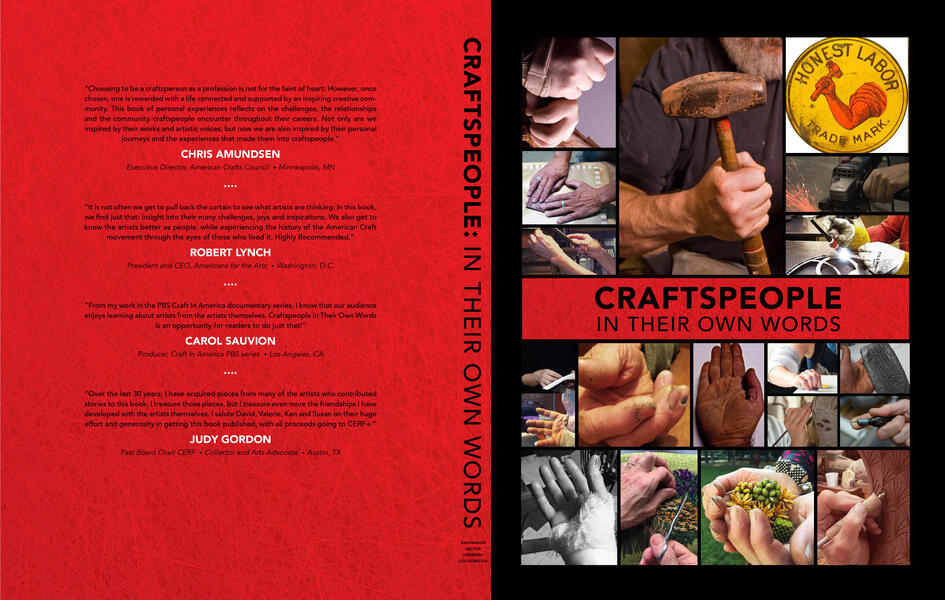 original jacket design for the bookMy original book jacket for CRAFTSPEOPLE: in their own words. 30 months ago Valerie hector ( noted bead artist), and myself began developing a project to chronicle the American Crafts movement from the 1960s until today combining the project with a fund raising effort to support the, "Craftsman's Emergency Relief Fund".
original jacket design for the bookMy original book jacket for CRAFTSPEOPLE: in their own words. 30 months ago Valerie hector ( noted bead artist), and myself began developing a project to chronicle the American Crafts movement from the 1960s until today combining the project with a fund raising effort to support the, "Craftsman's Emergency Relief Fund". -
The introduction to "Craftspeople in their own words"I have been participating in craft/art events since 1963. Often while at an exhibition someone will ask, "in all the years you have been working what is your all time favorite show". Usually my answer is that my favorite show is the one I am presently at, but that's a lie. My all time favorite is the first national juried event I ever participated in when I was 16, in Stowe, Vermont.
-
 Collage hands Baker .jpgMakers hands tell a thousand stories, a collage Craft (noun) something produced skillfully by hand Craftsmanship (noun) the skill involved in making something beautiful or practical using your hands Craftsperson (noun) someone who creates beautiful of practical objects using their hands Handcrafts (noun) objects created by people using their hands or an activity in which people created objects using their hands
Collage hands Baker .jpgMakers hands tell a thousand stories, a collage Craft (noun) something produced skillfully by hand Craftsmanship (noun) the skill involved in making something beautiful or practical using your hands Craftsperson (noun) someone who creates beautiful of practical objects using their hands Handcrafts (noun) objects created by people using their hands or an activity in which people created objects using their hands -
How to Cook and Ox1966. Sixteen and flying solo. Steering Mom’s olive-green Galaxy to my first craft event away from home. Black Mountain trained craftspeople explaining the “essence of the essential”. Exploring, probing, unknown foods, unknown drugs all demanding investigation. What could be better!
-
 Setting up the exhibit, a collageEach exhibit’s set up is the same, Yet different. Unload the vehicle, Crap packed under the seats, on the roof, between your legs. Lights, flotsam, action, The calm before the storm.
Setting up the exhibit, a collageEach exhibit’s set up is the same, Yet different. Unload the vehicle, Crap packed under the seats, on the roof, between your legs. Lights, flotsam, action, The calm before the storm. -
 Studios, a collage.Studios. Personal, private preserves Promoting creativity and reflection.
Studios, a collage.Studios. Personal, private preserves Promoting creativity and reflection. -
 Craftspeople working, a collage.Hands, eyes, backs, arms, Bent, intent, skilled, Speaking with a voice all their own.
Craftspeople working, a collage.Hands, eyes, backs, arms, Bent, intent, skilled, Speaking with a voice all their own.

